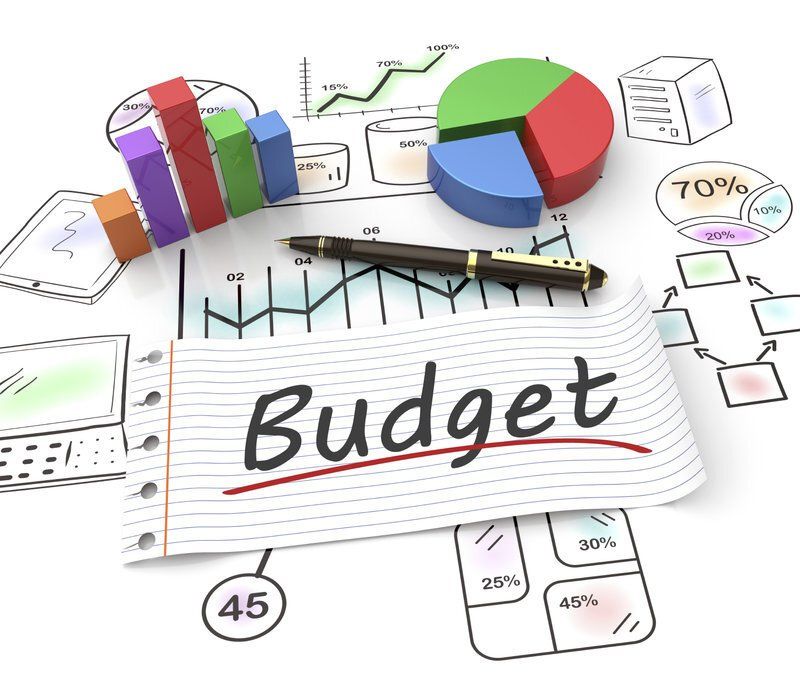Blog Layout
3 reasons your business needs a budget now

For many, the word ‘budget’ is about as appealing as the word ‘diet’.
It seems to imply what you will go without, rather than what you will achieve.
To a successful business owner, however, the word ‘budget’ has a very different meaning.
It’s more like a map than a diet. It’s an outline of where you want to take the business, and what you need to achieve to get there.
Running a business without a budget is like a ship’s captain setting off on a voyage without a map. Sounds ridiculous, doesn’t it. Who would do that?
Yet this is, figuratively speaking, what many business owners do.
Successful business owners, on the other hand, not only set clear targets and budgets each year, they monitor them closely each month, even each week, and adjust them as they go throughout the year.
Here are 3 compelling reasons your business needs a budget, now:
One:
If you don’t know where you’re going, how do you know you’re not already there?
If you’re not satisfied with how your business is performing, unless you set clear goals for where you want to take it, it’s probably as good as it is ever going to get. At best, it will just meander along, subject to the whims and vagaries of the economy and general market conditions.
The good news is that your business doesn’t need to meander along.
The first step in charting a clear course for growing and developing your business is objectively measuring ‘where it’s at’ right now.
And the numbers do tell a story.
For some, they act as a wake up call. For others, they just confirm the journey’s starting point.
It’s paradoxical that a large part of the value in a business budget is not in the numbers themselves. It’s in the realisation and acceptance of where you are and where you want to be.
The numbers are just the signposts for the journey.
A factual look at the numbers that describe where your business is right now takes away all the subjectivity, opinions and ‘reasons’ (often excuses, disguised as reasons).
This is the naked truth.
In fact, it is like standing on the scales, naked, looking at yourself in a full length mirror. That may or may not be a pretty sight!
For your business, these factual numbers are the sales, the variable costs, the margins, the overheads, and, lastly, the profit. After all your work, this is the reward you’re left with.
Then comes the first of a series of ‘hard questions’...
- Are you happy with that profit?
- Is it worth it? Or are you dissatisfied? Then ...
- What do you want those figures to look like?
Answer those questions, and you’ve just described where you want to be. Congratulations! You have charted your course, which is the first step to ensuring your success.
Two: What’s more important to treat? Symptoms or causes?
As you well know, sales don’t just happen. Costs don’t drop just because you want them to. Sales and costs are a result of other underlying factors. Put another way, they are symptoms of causes.
The business budgeting process quantifies the symptoms, and by asking a series of ‘What leads to this number?’ questions, it also identifies the underlying causes.
For example, underlying factors contributing to a sales (revenue) figure could include:
- the number of calls made,
- the number of customers walking through the door,
- the percentage of conversions of enquiries or walk-ins to sales, the dollar value of the average transaction, or simply
- where your marketing is targeted.
These are all called drivers. The sales figures are simply a result of these drivers. Costs are no different.
For example, the rent paid may be a result of the storage you need for your stock levels. Wages costs may be blowing out as a result of overtime paid but underlying that may be inefficient staff. Or a lack of clear processes. Or both.
So in reality what came first was not the sale or the cost, but their underlying drivers. The budgeting process forces you to name and to quantify these underlying drivers.
That’s one of the most valuable aspects of preparing your budget. Not the budget itself, per se, but identifying your business’ drivers.
Why?
Because then you can focus on improving them.
That’s what will produce the improved results in your business. No focusing on last quarter’s figures. That’s history.
It’s more fun to create history. And that is, in essence, what you are doing when you are in your own business. You are captain of your own destiny, and you can steer it in any direction you want.
Note that word ... direction. A key point is to have one.
You will enjoy how effectively the budgeting and planning process will get you crystal clear on your direction.
Three: Budgeting is not about accounting. It’s about being accountable.
Once you are clear on the handful of drivers that creates your business’ results, the next question is…
What are you going to do about it?
Your budget won’t just give you a monthly sales target, for example, it will help you quantify the drivers that will produce the result.
For example, if next month’s sales target is $120,000, that end-result figure is not your focus. Not on a day-to-day basis. Knowing the underlying drivers, your focus will instead become, for example:
25 calls per day (Driver No.1)
At 80% conversion rate (Driver No.2), with
Each customer buying an average of $300 worth of products (Driver No. 3).
Now you and your staff have a clear focus and are 100% accountable.
That’s good for them, and good for you and your business.
People in a business want a clear scoreboard and a ‘game to play’ so they know whether or not they are winning. Research has found that a lack of measurement in a job is demotivating to a staff member. Patrick Lencioni’s book ‘3 Signs of a Miserable Job’ gives some great examples of this.
Knowing these drivers, and quantifying a target for each you can then ask questions like:
- Have the 25 calls been made today?
- If not, why not? Is the target realistic?
- Does the team need training?
- Do they need better telephone equipment or dialing software?
- Or just more focus?
- Or guidance on what their task priorities should be?
- Or a combination of these?
- Are we being effective and converting 80% of the calls?
- Again, if not, why not?
You can then decide to improve skills, or systems, or attitude, or all three!
As you can see, the power of the budget is in the process of preparing it, and then the budget itself is a tool to hold you accountable to the measurable indicators you’ve chosen.
An added layer of accountability is... us.
We work with a number of clients where, on either a monthly or quarterly basis, we act as a sounding board and independent party to ask you the hard questions about the drivers and the results. This focuses your mind, allows you to form a clear Action Plan to improve results, and then increases your chances of success because you know you need to report in to us next time.
It’s a powerful process that you’ll enjoy due to the focus it creates and, in turn, the results that focus achieves in your business.
To take more control of your business and its performance, get in touch to make a time to come in and see us. Depending on the size of your business, we might work out that a quarterly process might work best (and be the most feasible, cost-wise), or your business might be at a point where monthly or even weekly guidance would be ideal.
Either way, we’ll outline your options and your costs so you know precisely what’s involved.
We look forward to helping you chart your course, helping to get a clear direction, and then keeping you and your business on course.
After all, you won’t end up at the ideal destination by drifting.
Need help with your accounting?

March 14, 2025
If your business interacts with the public — whether through customers, suppliers, events, or onsite work — public liability insurance can protect you against claims for injury or property damage. This generally covers legal costs and compensation, and although it’s not legally required, being sued for negligence can be costly (and bad for your business rep), so it’s highly recommended.

March 14, 2025
Co-owning a property can be a practical and financially beneficial arrangement, but when circumstances change, sometimes one party needs to jump ship. Whether due to financial strain, health issues, relocation, relationship breakdown, or differing property goals, it’s not uncommon for one co-owner to buy out the other. While this process may seem straightforward, there are several financial and legal considerations to consider.






